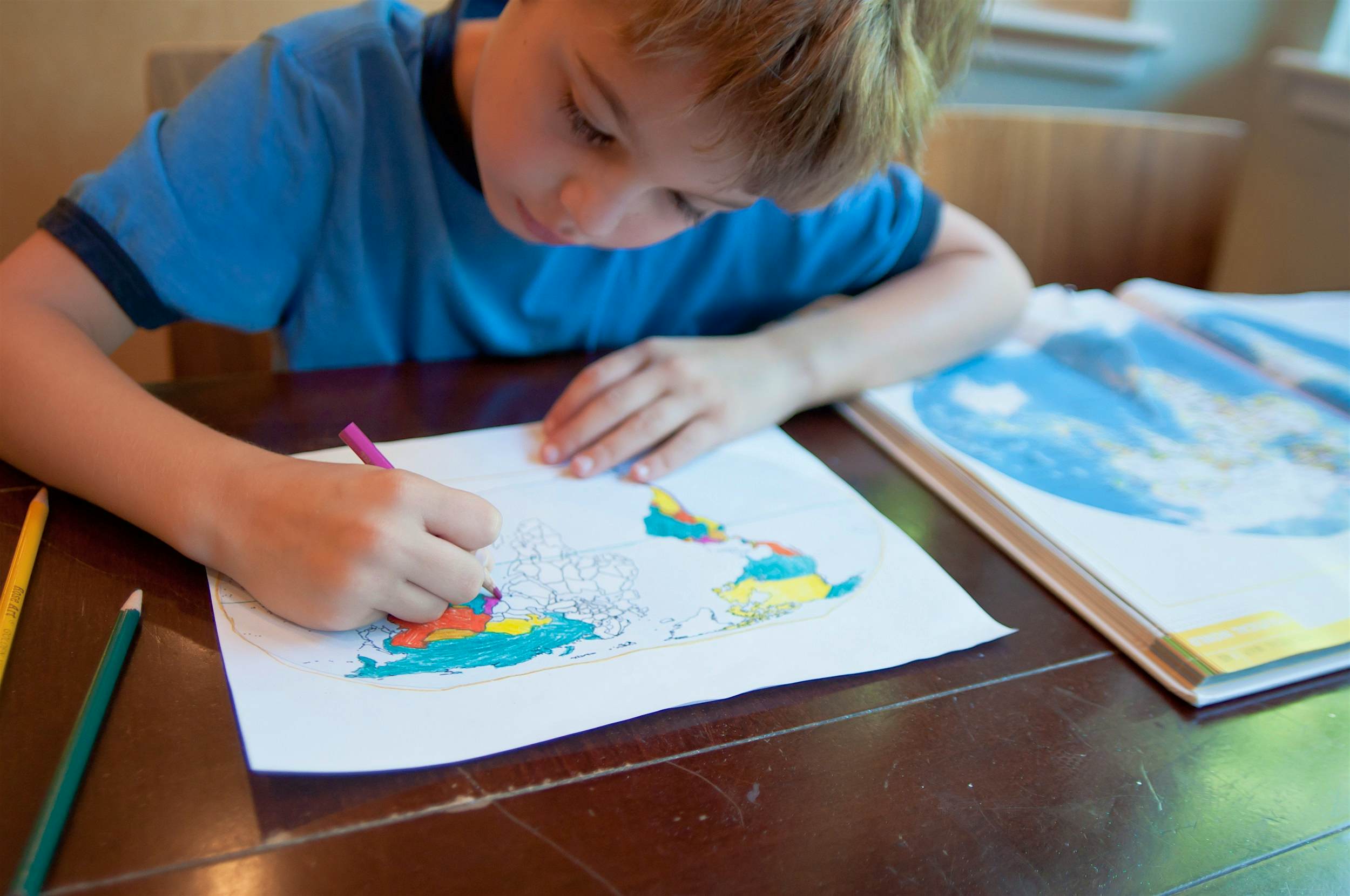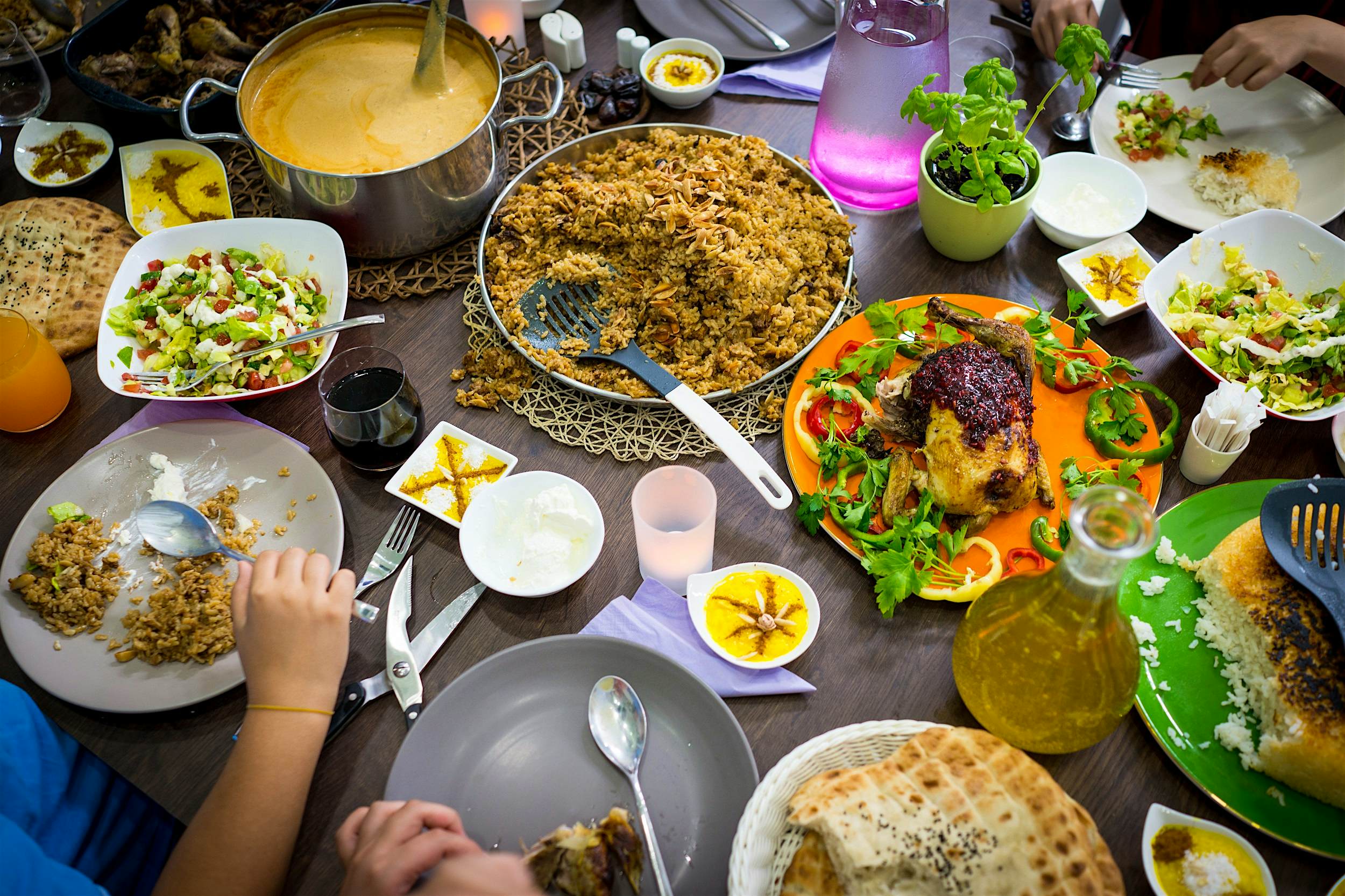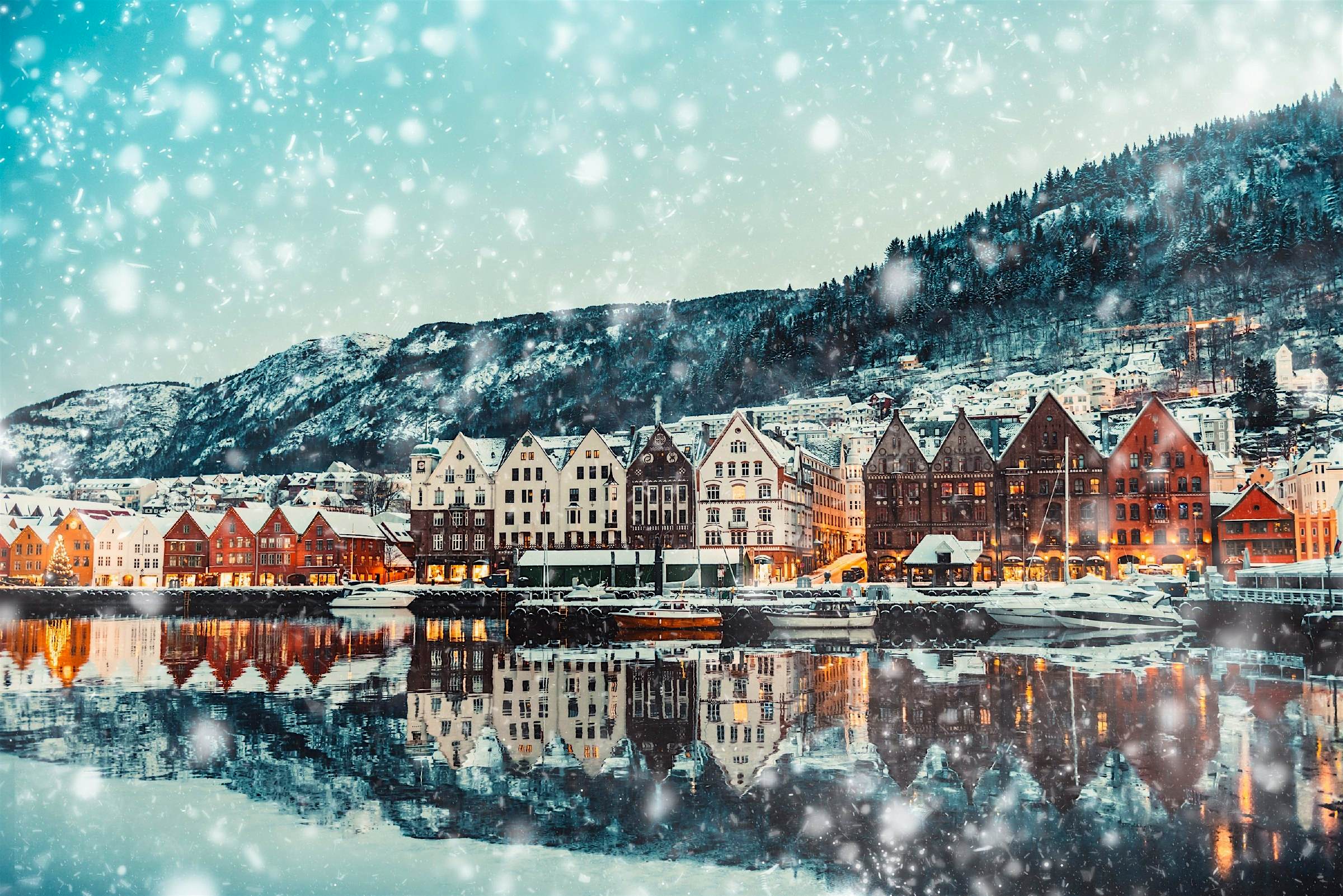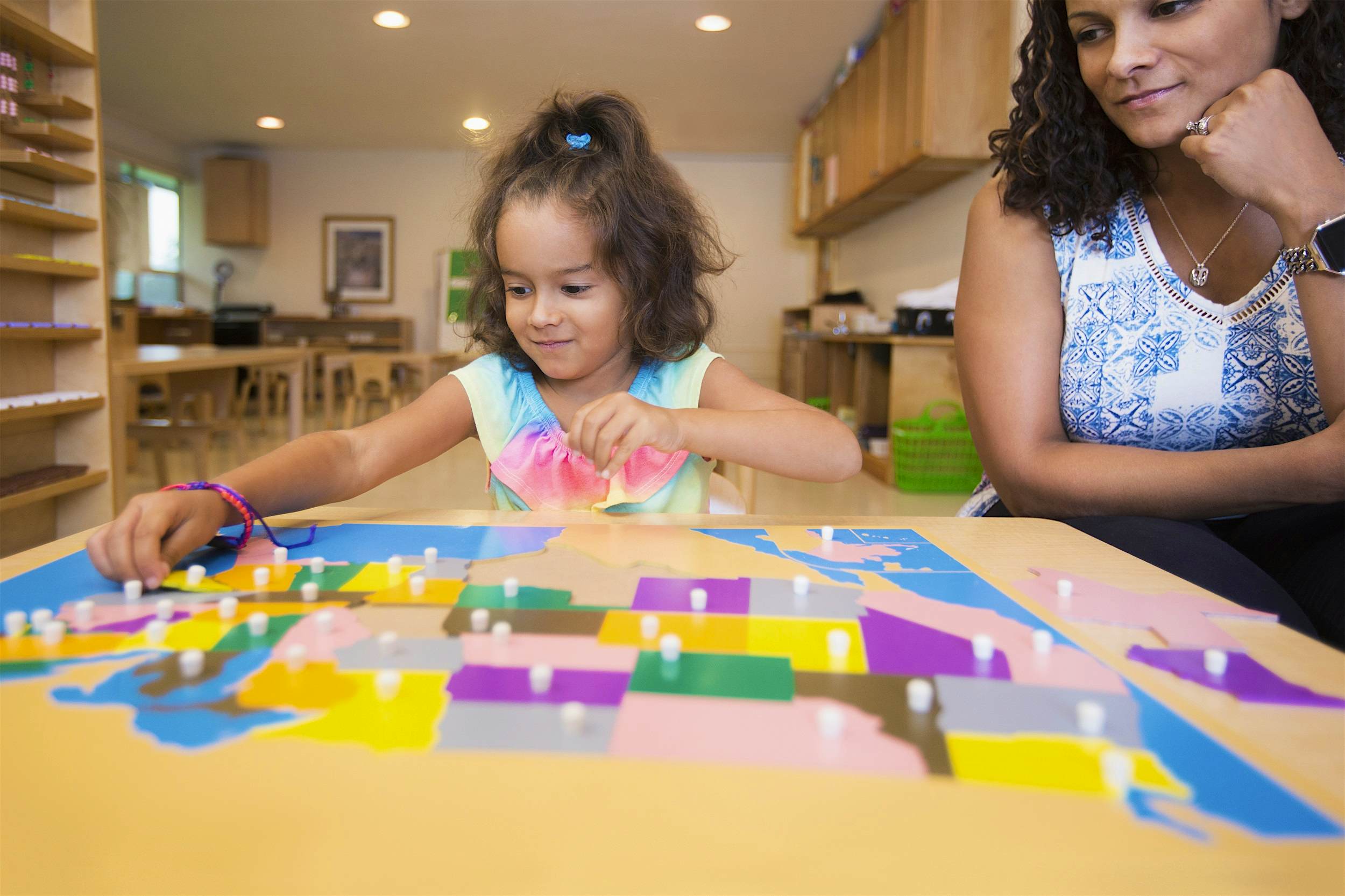9 ways to teach your kids about the world without leaving home
Do you want to travel the world with your kids but find yourselves limited by finances, school holidays, illness, or your family’s environmental impact? While you may struggle to completely replicate the incredible experience of travel, there are plenty of ways you can introduce your kids to the world without even leaving your home. As Marcel Proust said, "The real voyage of discovery consists not in seeking new landscapes, but in having new eyes." Use these ideas to have family adventures from home, while leaving no carbon footprint.
 There are many great resources to help families explore the world from home © Teresa Short / Getty Images
There are many great resources to help families explore the world from home © Teresa Short / Getty Images
1. Read fact books and atlases
From Dr Seuss to Percy Jackson, Harry Potter and beyond, fiction is a fantastic way to take kids on a journey to faraway places. But in terms of properly learning about the world, nothing beats a really good atlas or fact book. Thankfully, any decent bookshop has a wealth of beautifully-illustrated, carefully-researched and well-designed children's non-fiction books about our wonderful world.
We’re not just talking about our own range of Lonely Planet Kids books here. Keep younger children busy with Usborne’s Lift the Flap Picture Atlas, while older kids will love learning about how geography has shaped the political world with the children’s version of Prisoners of Geography. Maps is another one to treasure with detailed pages of cultural information overlaid onto regional maps. If you’re looking for more ideas, family travel bloggers at ytravelblog have put together 12 suggestions for books about maps for kids.
 Get creative with junk modelling, or build landmarks with blocks © Cavan Images / Getty Images
Get creative with junk modelling, or build landmarks with blocks © Cavan Images / Getty Images
2. Get crafty and creative
Toddlers exploring new lands in cardboard boats, younger children fashioning landmarks with play dough, wooden bricks or Lego, and tweens and teens making laser cut models or 3D puzzles from kits; whatever age your kids are there are ways to create something fun together which tells them a bit more about the world. To get you started, our Cardboard Box Creations book has lots of ideas for junk modelling, the Brick City series shows you how to make landmarks from New York, London and Paris from Lego and you can even build your own History or Dinosaur Museum.
Both Lego’s Architecture series and CubicFun’s three-dimensional models are big hits with older children – and making these together is a lovely way to bond with your increasingly independent tween or teen. If you want to keep things simple, get the kids making their own map or drawing a landmark. Colouring in a world map on a doodle pillowcase is a surprisingly educational and mindful activity for the whole family.
 Learn about a culture through its food © Zurijeta / Shutterstock
Learn about a culture through its food © Zurijeta / Shutterstock
3. Take a culinary tour
Is there a better way to get to know another culture than through its food? If you can’t get first-hand experience of these new tastes then bring them into your own kitchen. Use kids cookbooks such as The Around The World Cookbook or follow the BBC show My World Kitchen where children from different countries show you how to make a typical dish.
Make it even more fun by turning your kitchen into a local cafe or street food hut, complete with menu (and prices in the local currency), music and appropriate cutlery and crockery. Start simple with a gingham tablecloth, some croissants and milky chocolat chaud to take you to Paris and progress to making sushi, mastering chopsticks and a more mindful eating experience in Japan.
4. Dance to kid-friendly tunes from around the world
Put on some tunes from around the world and have a dance. Luckily for you we’ve got just the playlist to get your family started on their global musical tour. You could also pick a country you want to visit and teach yourselves a dance using a bit of inspiration from YouTube.
5. Try language apps and online quizzes
With apps and gaming there are plenty of opportunities to learn while you have fun. Stack the States or Stack the Countries, Flags of the World, Animal Quiz, Duolingo (for language learning), DimDomWorld Map all come recommended and we’ve not even got started on virtual reality. The sky is the limit when it comes to online opportunities to learn about the world, just make sure you spend some time on the device with your kids so you know what they are doing.
 Bergen in Norway, the inspiration for Arendelle in Frozen © Tatyana Vyc / Shutterstock
Bergen in Norway, the inspiration for Arendelle in Frozen © Tatyana Vyc / Shutterstock
6. Get the television on
While we know we should be avoiding too much screen time for our kids, there’s no denying that children can accumulate a lot of knowledge by watching and playing on screens. Something as simple as family movie night complete with themed snacks, can provide the chance to transport the whole family far away from your home for a couple of hours. Think of Indiana Jones and the Middle East, Frozen and Scandinavia, Ratatouille and Paris, Rio and Rio de Janeiro, to name but a few.
Common Sense Media has an extensive list of educational TV shows for kids, but obvious places to start are the Planet Earth or Nature series. With smaller children you can’t go wrong with the British series Go Jetters, where four explorers travel the world learning all about major landmarks.
 Map puzzles help children see how parts of the world fit together © Camille Tokerud / Getty Images
Map puzzles help children see how parts of the world fit together © Camille Tokerud / Getty Images
7. Complete a map jigsaw
As much as we appreciate the benefits of technology in terms of learning about the world, when it comes to family bonding nothing can beat a digital detox and time spent together on a more "traditional" activity. Working on a jigsaw together can create a strong sense of teamwork. For younger children choose a world map, solar system or even simple animal pairs which gives you a chance to talk about what you see as everything comes together. Older children will relish the challenge of more and smaller pieces, and might enjoy identifying the landmarks at the end in this 1000pc one from Ravensburger.
8. Try your luck with world-themed board games
Risk and other games involving world domination are a good way to develop a (slightly skewed) sense of geography in older children. Train enthusiasts will love Ticket to Ride, which comes in all sorts of variations for different parts of the world. You can create your own little vexillologist with Flags of the World, consolidate their knowledge of the US with Scrambled States and make them a super quizzer by focussing on the geography questions with the family edition of Trivial Pursuit.
Sustainable travel goals for 2020
Sustainable travel goals for 2020
Make meaningful travel goals for 2020 - from escaping the crowds to travelling by train.
9. Get fancy with some dress up
Lastly, if you want to feel really good about your parenting, one of the best analogue games you can play is to dress everyone up as explorers (or Greeks, or wizards, or whatever your dressing-up box or household can find) and go marauding around your home finding objects that show you something about the world. Reconvene and get everyone to tell you what they know about their object, create a story about it, or simply use it as something to research and learn about.
This article originally ran on our sister site, Lonely Planet


